Cool 8th Graders, Computers & Games!
I am volunteering for the 3rd year in a row at Lamar Middle School (Lewisville ISD), a nearby school to our house in Texas. I kept accepting the volunteering task of presenting at its career fair even after my son moved on to high school because I wanted to encourage new generations in computer science. I estimated to have delivered to around 150 8th graders between all three times combined. I would first talk about my past, what I do with Thomson Reuters, and my passion for technology. Below are some slides that I presented between 2017 and 2018.
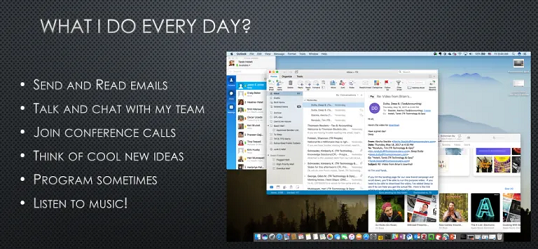
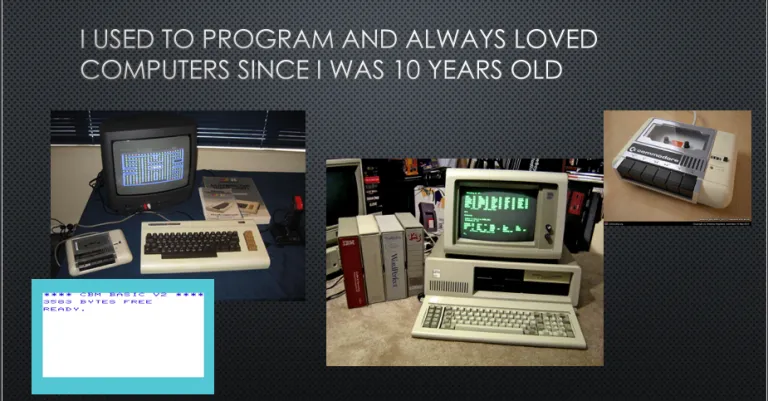
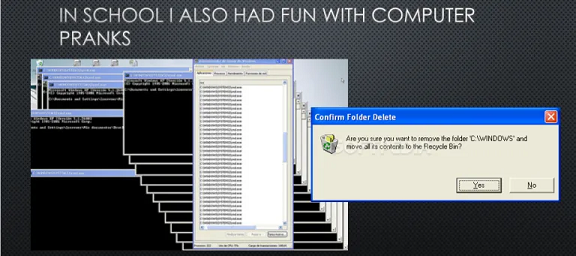
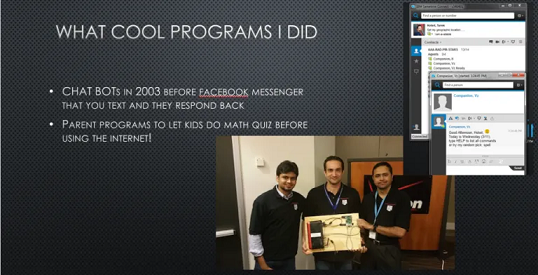
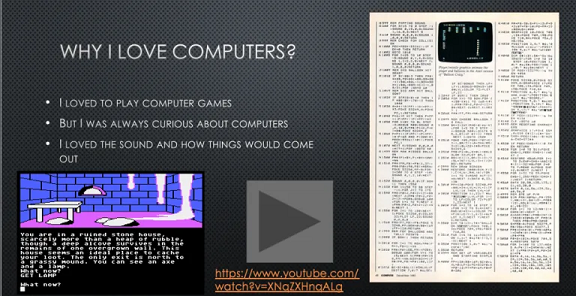
Two years ago, I brought various gadgets to school, including a Raspberry Pi, a maker robot, an Arduino, and multiple devices to showcase what one can do with technology. A year later, I focused on AI and began showcasing what artificial intelligence can do through videos.
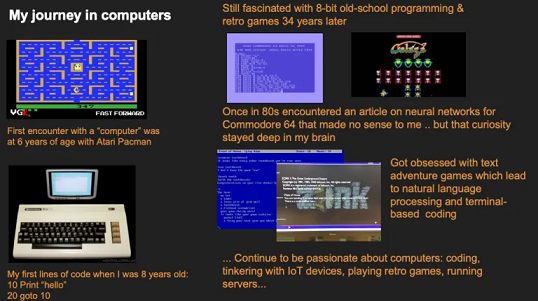
I showed YouTube videos of the MIT cheetah robot, an Audi self-driving car, and a chatbot interaction between Alexa and Siri.
After that, I evangelized about building a future career with computers.
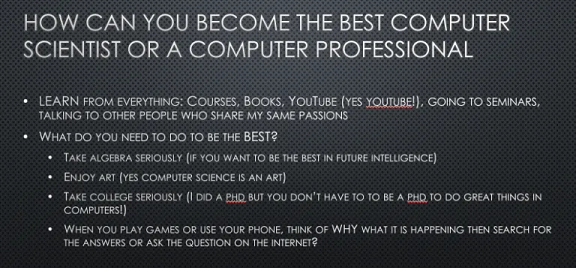
This year, I made things more interactive by showcasing actual implementations and aligning the topic with their age of playing games! Hence, I focused on how gaming and artificial intelligence align and how it can be cool to be the next programmer of such algorithms rather than simply playing Fortnite, League of Legends, Dota 2, and more.
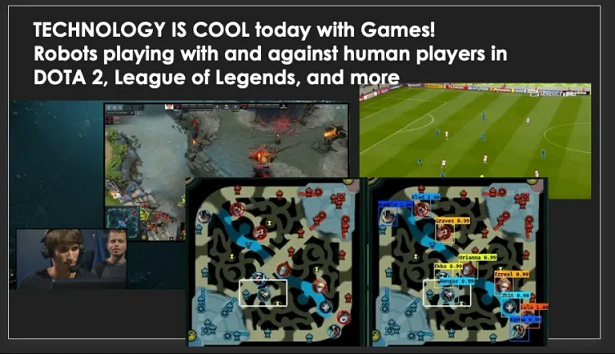
I focused on leveraging cameras to let computers learn from players or people. Showed Chintan from DeepGamingAI video “creating custom Fortnite dances with webcam and Deep Learning.”
I then went over the videos from Farza “DeepLeague: leveraging computer vision and deep learning on the League of Legends mini map + giving away a dataset of over 100,000 labeled images to further esports analytics research” and explained how machines could learn through cameras
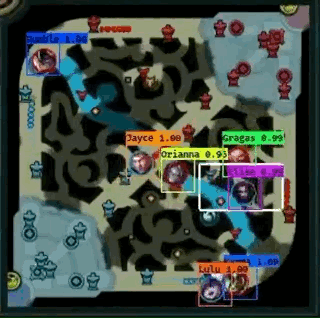
From the website: “DeepLeague at work. All I input is a VOD of an LCS Game, and by analyzing just the pixels of the VOD, DeepLeague can tell us how every champion moves around the map.”
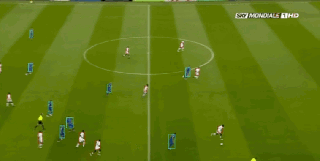 From the website, “Check out the bounding boxes around the blue players that our program that “watches” the video produces.”
From the website, “Check out the bounding boxes around the blue players that our program that “watches” the video produces.”
After that, I brought out Amazon AWS Deep Lens that I had set up for the event previously by deploying the object recognition model that recognizes 20 objects: airplane, bicycle, bird, boat, bottle, bus, car, cat, chair, cow, dining table, dog, horse, motorbike, person, potted plant, sheep, sofa, train, and TV monitor. I projected the camera at my audience and began explaining the process of neural networks, object detection, object classification, and reinforcement learning if we expanded the project.
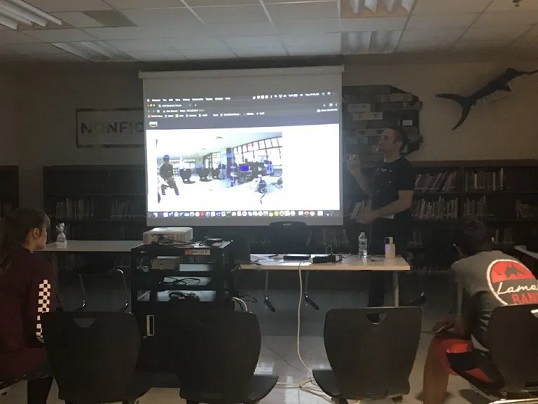
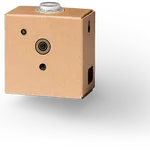
After that, I brought out my Google AIY Vision kit and explained how it works. I could not get the device to do more than beep when it saw a face. Its code should make different colors when I make a happy or frowning face. I had it working all along in the past, but I realized I brought the wrong lens with me this time. Nevertheless, I explained how students could build such kits by showing them what’s in them. Overall, 45 students this year came to my all-day demo. They would come in groups of 5 to 7 every 20 or 25 minutes. I would answer questions about my career and what I do at Thomson Reuters. Some asked me about my day-to-day work at Thomson Reuters, my challenges, and what makes me interested in work. My answers were genuine and straightforward: I love taking on challenging projects and focusing on solving them with the team, just like we would playing the next adventure game and solving its puzzles.
My key take from the whole experience is that most students love games, and that I used to make my point that they can leverage computers in whatever they love to do. Some said they want to do something in law enforcement, law, media, medicine, and not necessarily games or computer science. Even that, I had an answer: computer programming and artificial intelligence are helpful in whatever career they wish. Hopefully, the students left my sessions more interested in computers and programming. That’s the goal. I hope it worked for them just like computers worked for me in my entire life and continue to do so through innovation and problem-solving.
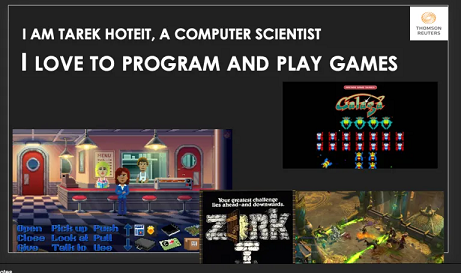
Enjoy Reading This Article?
Here are some more articles you might like to read next: